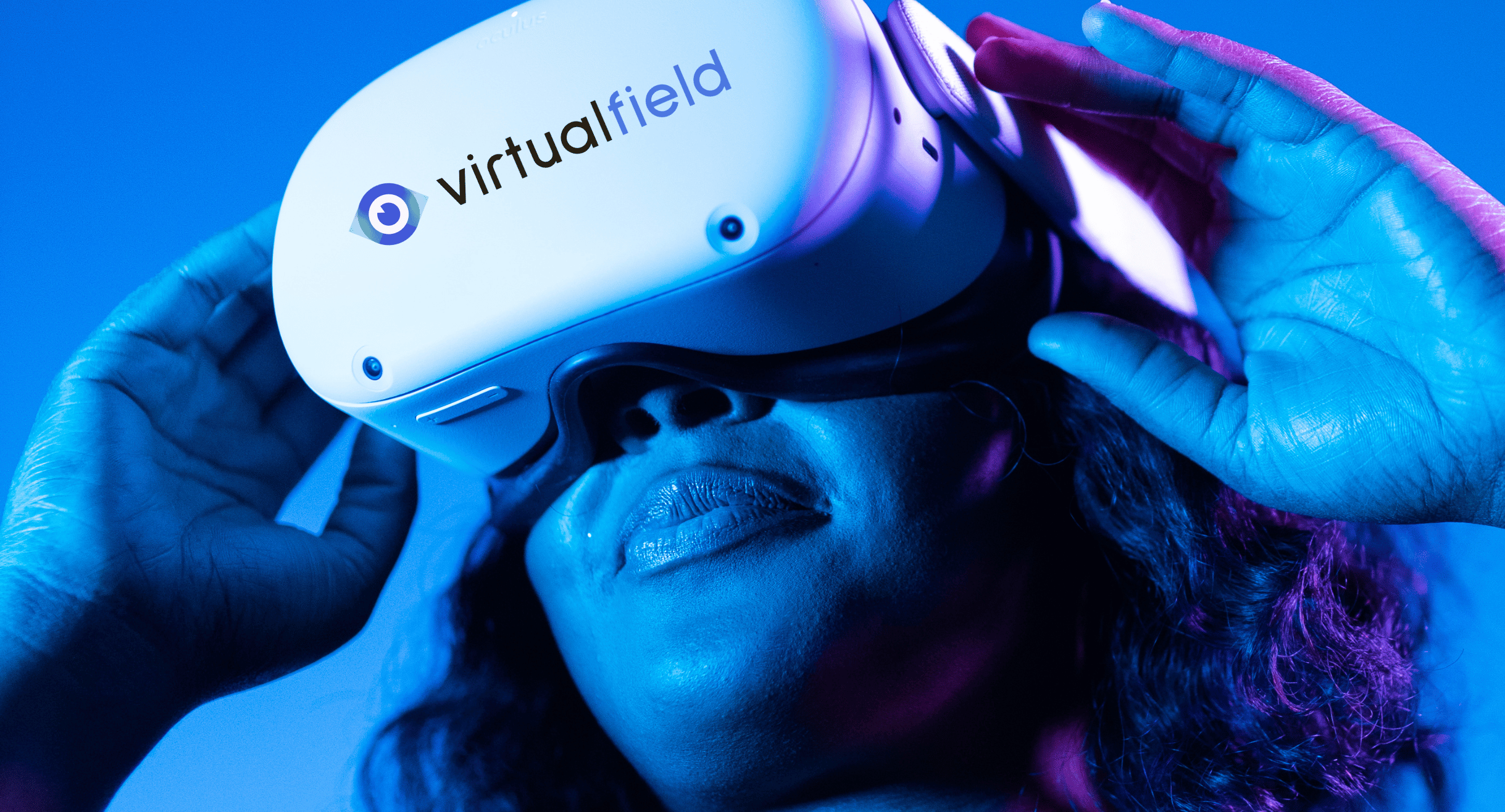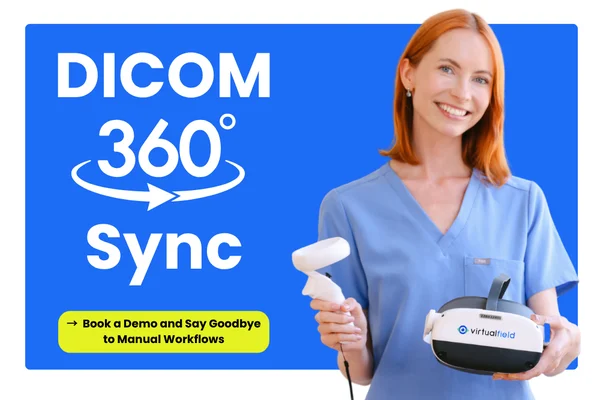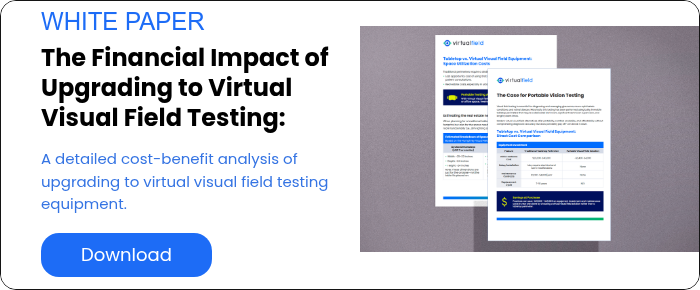Virtual visual field (VF) testing is gaining popularity as a practical, patient-friendly alternative to traditional bowl perimetry. As practices look for ways to streamline diagnostics, reduce patient discomfort, and improve access to care, virtual visual field technology like Virtual Field offers a compelling solution. These devices are portable, space-saving, and supported by growing clinical validation, making them an attractive option for modern eye care settings. Many practices are adopting virtual VF testing to increase flexibility, serve more patients, and improve overall efficiency while maintaining high standards of diagnostic accuracy.
Whether supplementing or replacing conventional methods, virtual VF is becoming a valuable tool in today’s vision care landscape. Here’s a step-by-step guide for successful integration.
1. Assess Clinical Needs and Practice Goals
Before implementing virtual reality (VR) visual field technology, it's essential to evaluate your patient demographics and existing operational challenges. Start by identifying which patient populations in your practice would benefit most from a virtual VF solution. These often include individuals with mobility limitations, pediatric patients who may struggle with conventional equipment, patients with neuro-ophthalmic conditions requiring regular field monitoring, and those with glaucoma who require frequent testing.
Next, examine the current pain points in your practice’s perimetry workflow. Are you seeing low test reliability due to fatigue or patient misunderstanding? Do appointment backlogs or staffing shortages limit your ability to perform timely field tests? Are patients declining in-office testing due to discomfort or time constraints? Understanding these challenges will help clarify where virtual VF technology could create measurable improvements.
Once needs are established, set clear objectives to guide technology evaluation and integration. Common goals include increasing the number of visual field exams performed, improving patient adherence to testing schedules, and reducing chair time without compromising diagnostic accuracy. These goals will help shape decisions about workflow design, technology selection, and staff training, ensuring the investment aligns with both patient care and operational efficiency.
2. Compare and Select the Right Technology
Selecting a virtual visual field solution requires a balance of clinical performance, regulatory compliance, and workflow efficiency. Start by confirming FDA registration and CPT code support, which are essential for both safety and reimbursement. Look for validation data that demonstrates diagnostic accuracy and ask for third-party reports or clinical endorsements to support these claims. For example, studies show Virtual Field delivers accuracy comparable to the Humphrey Field Analyzer using the proprietary BOLT algorithm, which enables faster tests without sacrificing precision.
Beyond accuracy, compare practical features that impact both patient comfort and staff efficiency. Headset design plays a critical role; lightweight and adjustable devices tend to improve test completion rates. Shorter test durations can reduce patient fatigue and accommodate high-volume clinics. Solutions should also be intuitive enough for technicians to operate with minimal training, ideally through structured onboarding programs.
EHR integration is another must-have. Systems offering DICOM or HL7 capabilities can help streamline data management and avoid redundant documentation. Additional considerations include a vendor’s reputation, long-term warranty coverage, and commitment to software updates.
👁️ ➡️ More inSIGHTS: The Top 9 Must-Haves When Choosing a Visual Field Exam Solution [Infographic]
3. Design and Implement Clinical Workflows
Thoughtful workflow design ensures consistency, efficiency, and ease of adoption. Follow these best practices when designing and implementing clinical workflows.
- Choose the Right Testing Environment. Unlike traditional perimetry, which often requires a dedicated dark room, virtual visual field devices offer more flexibility. Testing can be conducted in pretesting rooms, exam lanes, or even waiting areas, depending on your practice layout. Identify locations that minimize disruptions while ensuring patient comfort and staff accessibility.
- Train Technicians for Consistency and Confidence. Proper test administration begins with well-trained staff. Although many virtual VF platforms are designed for ease of use, technician training is essential to ensure accurate results. Vendor-led onboarding is highly recommended. Reputable providers will supply structured training sessions, implementation support, and clinical guidance to reduce the learning curve.
- Establish and Standardize Testing Protocols. Consistency is key to diagnostic reliability. Develop and document protocols covering test type, duration, patient instructions, and documentation procedures. Embedding checklists or scripting into daily workflows helps reduce user variability and supports data integrity across staff members and locations.
- Support Long-Term Operational Efficiency. Thoughtful workflow design not only improves testing accuracy but also empowers staff and enhances patient satisfaction. Practices that invest early in planning and process development are better positioned for scalable, sustainable success.
4. Educate Patients and Enhance the Experience
Patient education is essential to the successful adoption of virtual visual field testing. Clearly communicating the benefits (e.g., increased comfort, shorter test times, the convenience of in-room or same-day testing) can improve cooperation and reduce anxiety. Patients who previously struggled with traditional bowl perimetry may appreciate the streamlined, headset-based experience, particularly those with mobility or postural limitations.
For patients unfamiliar with VF testing, especially older adults, simple and respectful explanations are most effective. Avoid technical language and focus on how the test contributes to preserving vision. Reassure patients that the exam is non-invasive and brief, and that staff will be available to assist them throughout the process.
Use visuals or relatable comparisons to reinforce understanding. For example, describing the test as a way to “check the full picture of your vision” can make the purpose more tangible.
Patient education strategies include:
- Emphasizing comfort, speed, and accessibility
- Framing the test as essential to long-term vision health
- Using analogies or visual aids to simplify complex ideas
- Providing reassurance and offering staff support during testing
- Tailoring explanations for older adults or those unfamiliar with the technology
Step 5: Maximize Reimbursement and Practice Revenue
Successfully integrating virtual visual field testing into your practice isn’t just a clinical decision, it’s a financial one. Understanding how these tools fit into reimbursement models and long-term revenue planning is essential to realizing their full value.
CPT Code Eligibility and Billing Integration
Perimetry services are reimbursable under CPT codes 92081 (limited), 92082 (intermediate), and 92083 (extended). Virtual reality visual field platforms that are FDA-registered and clinically validated can support billing under these same codes. Because most virtual VF devices meet the necessary criteria, they integrate easily into existing billing workflows without requiring additional procedural changes. Ensure your billing team is aware of the device’s classification and documentation requirements to prevent claim denials.
ROI and Revenue Opportunities
Virtual visual field solutions enable increased test volume by eliminating the need for a dedicated room or specialized technician. This opens up capacity for additional reimbursable services within the same visit. Test repeatability, reduced test abandonment, and improved patient compliance further enhance profitability.
To assess return on investment, monitor:
- Monthly test volume by CPT code
- Reimbursement per test
- Staff time saved per exam
- Reduction in missed or incomplete tests
Additionally, the portability of virtual visual field devices allows practices to serve previously unreachable populations. Whether deployed in rural clinics, nursing homes, or satellite offices, this technology extends diagnostic care and reimbursable services to patients outside the traditional practice footprint.
By aligning reimbursement strategy with technology capabilities, practices can improve care delivery, optimize staff resources, and generate sustainable revenue growth.
Conclusion
Virtual visual field technology is easier to integrate than many practices expect. Whether you're managing a solo clinic or a multi-location network, this solution offers a practical path to modernize care, reduce friction in testing workflows, and increase patient access to essential diagnostics. Practices nationwide are using virtual visual field platforms to improve efficiency, boost testing volume, and enhance patient satisfaction without compromising clinical accuracy.
If you’re considering a shift, explore how Virtual Field supports implementation, training, and long-term success. With the right partner and strategy, your practice can adopt this technology with confidence and clarity.
About Virtual Field
Virtual Field delivers an exceptional eye exam experience. Eye care professionals including ophthalmologists and optometrists examine patients faster, more efficiently, and more comfortably than ever before. Exams include Visual Field, 24-2, Kinetic Visual Field (Goldmann Perimetry), Ptosis, Esterman, Color Vision, Pupillometry, Extraocular Motility (EOM), and more.



